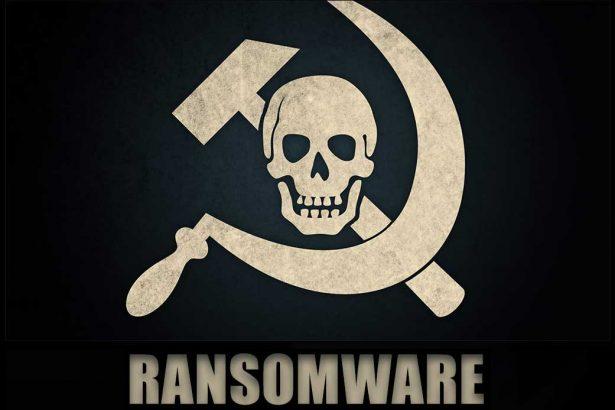Ransomware continues to evolve as a significant threat in the cybersecurity landscape, with new variants emerging regularly. One of the latest and most dangerous threats is the DeathGrip ransomware. This article delves into the intricacies of DeathGrip ransomware, its actions and consequences, detection names, similar threats, and a comprehensive removal guide. Additionally, we’ll discuss best practices for preventing future infections.
Understanding DeathGrip Ransomware
DeathGrip ransomware is a type of malicious software designed to encrypt files on a victim’s computer, rendering them inaccessible. The attackers then demand a ransom in exchange for the decryption key. This ransomware can infiltrate systems through various vectors, including malicious email attachments, compromised websites, and software vulnerabilities.
Actions and Consequences of DeathGrip Ransomware
Once DeathGrip ransomware infiltrates a system, it executes the following actions:
- Encryption of Files: DeathGrip uses strong encryption algorithms to lock files, including documents, images, and databases. Encrypted files often receive a new extension, making it clear that they have been compromised.
- Ransom Note Display: After encryption, a ransom note is displayed on the victim’s screen. This note typically includes instructions on how to pay the ransom, usually in cryptocurrency, to receive the decryption key.
- Network Propagation: In some cases, DeathGrip can spread to other devices on the same network, increasing its impact and potential damage.
Consequences of a DeathGrip Infection
The consequences of a DeathGrip ransomware infection can be severe:
- Data Loss: Without the decryption key, victims may lose access to their critical data permanently.
- Financial Loss: Paying the ransom does not guarantee file recovery and can be costly.
- Operational Disruption: Businesses may experience significant downtime, leading to lost productivity and revenue.
- Reputational Damage: A ransomware attack can damage an organization’s reputation and erode customer trust.
Text of the Ransom Note Left by DeathGrip
Text presented in the text file and on the wallpaper:
DeathGrip Ransomware Attack | t.me/DeathGripRansomware
This computer is attacked by russian ransomware community of professional black hat hackers.
Your every single documents / details is now under observation of those hackers.
If you want to get it back then you have to pay 100$ for it.
This Attack Is Done By Team RansomVerse You Can Find Us On Telegram
@DeathGripRansomware Contact The Owner For The Decrypter Of This Ransomware
#DeathGripMalware
Detection Names for DeathGrip Ransomware
Different cybersecurity vendors may identify DeathGrip ransomware using various names. Some common detection names include:
- Ransom:Win32/DeathGrip
- Trojan.Cryptolocker.DeathGrip
- Ransom.DeathGrip.A
- W32/DeathGrip
Similar Ransomware Threats
DeathGrip is part of a broader family of ransomware threats that have caused significant damage in recent years. Some similar ransomware variants include:
- WannaCry: Infamous for its global impact, WannaCry exploited a Windows vulnerability to spread rapidly.
- Locky: A ransomware variant known for its widespread distribution through phishing emails.
- Cerber: Notable for its use of sophisticated encryption and frequent updates.
Comprehensive Removal Guide for DeathGrip Ransomware
Removing DeathGrip ransomware requires a systematic approach to ensure complete eradication and recovery of affected files. Follow these steps to remove DeathGrip ransomware from your system:
Step 1: Isolate the Infected Device
- Disconnect from the Network: Immediately disconnect the infected device from the internet and any local networks to prevent further spread.
- Power Off: If possible, power off the device to stop the ransomware from continuing its encryption process.
Step 2: Boot into Safe Mode
- Restart in Safe Mode: Boot your computer into Safe Mode to prevent the ransomware from running. This can be done by restarting the computer and pressing the F8 key (or a similar key) during startup to access the boot menu.
Step 3: Identify and Terminate Malicious Processes
- Open Task Manager: Press Ctrl+Shift+Esc to open Task Manager.
- End Malicious Processes: Look for suspicious processes related to DeathGrip ransomware and terminate them. Common names may include random strings of characters.
Step 4: Delete Ransomware Files
- Locate Ransomware Files: Use File Explorer to search for and delete files related to DeathGrip ransomware. These files may be located in temporary directories, the startup folder, or other common system directories.
- Clear Temporary Files: Run Disk Cleanup to remove temporary files that may be harboring the ransomware.
Step 5: Restore Files from Backup
- Use Backups: Restore your files from a recent backup. Ensure that the backup is clean and free of ransomware.
- Decrypt Files: If you do not have backups, research online for possible decryption tools. Sometimes security researchers release decryption tools for specific ransomware variants.
Step 6: Perform a Full System Scan
- Update Antivirus Software: Ensure your antivirus software is up to date.
- Run a Full Scan: Perform a comprehensive system scan to detect and remove any remaining traces of DeathGrip ransomware.
Step 7: Reconnect to the Network
- Reboot and Reconnect: After ensuring your system is clean, reboot the device and reconnect to the network.
- Monitor the System: Keep an eye on system performance and look for any signs of remaining malware.
Best Practices for Preventing Future Infections
Preventing ransomware infections requires a proactive approach. Implement the following best practices to reduce the risk of future attacks:
Regular Backups
- Automate Backups: Schedule regular backups of important data and ensure they are stored offline or in a secure cloud environment.
Security Awareness Training
- Educate Employees: Conduct regular training sessions to educate employees about phishing attacks, suspicious emails, and safe browsing habits.
Patch Management
- Update Software: Keep all software, including the operating system and applications, up to date with the latest security patches.
Email Security
- Filter Emails: Implement email filtering to block malicious attachments and links.
- Verify Senders: Encourage users to verify the authenticity of emails before opening attachments or clicking links.
Network Security
- Segment Networks: Use network segmentation to limit the spread of ransomware within the organization.
- Implement Firewalls: Deploy firewalls to block unauthorized access to the network.
Endpoint Protection
- Install Antivirus: Ensure all devices have reputable antivirus software installed and regularly updated.
- Enable Multi-Factor Authentication (MFA): Use MFA to add an extra layer of security to user accounts.
Conclusion
DeathGrip ransomware represents a serious threat to both individuals and organizations. Understanding its actions and consequences, recognizing its detection names, and being aware of similar threats are crucial for effective response and prevention. By following the comprehensive removal guide and implementing best practices, you can mitigate the risk of ransomware infections and safeguard your data.
If you are still having trouble, consider contacting remote technical support options.




